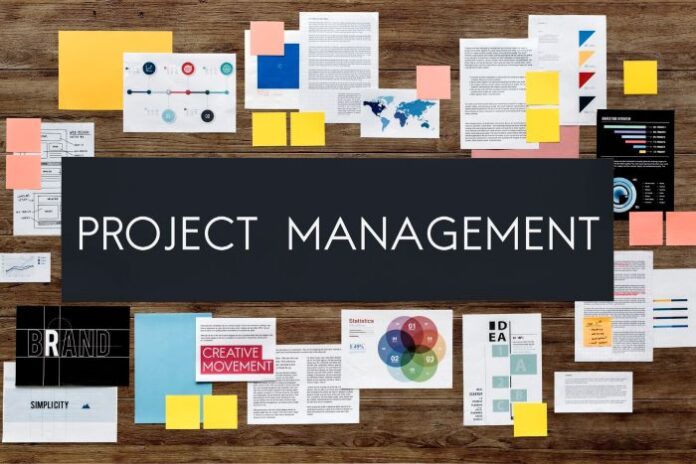The project manager is not only instructed to provide results on time and within the budget – they also need to communicate effectively. One of the frequently overlooked but critical components of a successful connection is the use of visual content. Images matter because they capture attention quickly, clarify complex ideas, and leave a lasting impression on the audience.
At Coruzant Technologies, where we connect companies with higher-level professionals in areas such as SAP, ERP, and digital transformations, we understand that clarity and accuracy. But in addition to data and reports, there is another powerful tool: images.
In this article, we study how visual elements can improve your project management process and why the choice of correct images matters more than ever.
Table of contents
Why Visuals Are Crucial in Project Management

Human beings are inherently visual learners. Research shows that people remember about 10% of what they hear after three days, but when paired with a relevant image, retention jumps to around 65%. This phenomenon makes visuals an essential part of any project manager’s toolkit.
When managing complex initiatives — whether it’s an enterprise software rollout or infrastructure development — conveying information clearly is key. Visuals help break down complexity into digestible pieces. A well-designed chart, for instance, can convey timelines, dependencies, and risks far more efficiently than pages of text.
Moreover, visuals foster better alignment across teams and stakeholders. Whether you’re presenting to executives, updating team members, or sharing progress with clients, images support understanding and engagement.
Types of Visual Content Used in Project Management
Visual content comes in many forms, each serving a unique purpose:
- Diagrams and Charts: Gantt charts, flowcharts, and Kanban boards provide structure and clarity.
- Infographics: Ideal for summarizing project status, milestones, and KPIs.
- Screenshots and Diagrams: Useful in technical documentation and user guides.
- Photographs and Stock Images: These add context and personality to presentations, reports, and marketing materials.
For example, when documenting a construction-related project — such as building new facilities or upgrading infrastructure — including real-world imagery helps stakeholders visualize progress and outcomes more concretely.
How to Choose the Right Visual Content
Selecting the right visual content isn’t just about aesthetics — it’s about relevance, quality, and professionalism.
Here are some tips:
- Ensure the image aligns with the message you’re trying to convey.
- Use high-resolution images to maintain a polished look.
- Respect licensing agreements — always opt for royalty-free or properly attributed sources.
- Tailor visuals to your audience: formal for executive reporting, more illustrative for internal updates.
A fantastic place to find professional, ready-to-use images is Depositphotos, which offers a wide selection of high-quality stock photos, including a dedicated section for construction and engineering visuals.
Integrating Visuals into Your Project Documentation and Presentations
Once you’ve selected the right visuals, integrating them effectively is the next step. Here’s how to do it well:
- Balance is Key: Avoid overcrowding slides or documents with too many images. Let visuals support, not distract from, your core message.
- Maintain Consistency: Use a consistent color scheme, font style, and image tone throughout your presentation or report.
- Use Templates: Tools like PowerPoint, Canva, and Miro offer templates specifically designed for project management needs.
- Adapt to Format: What works in a detailed project plan might not be suitable for a quick executive summary. Adjust accordingly.
By thoughtfully incorporating visuals, you’ll create more engaging, easier-to-understand deliverables that resonate with your audience.
Measuring the Impact of Visual Communication
It’s one thing to include visuals — it’s another to ensure they make an impact. To assess their effectiveness:
- Collect feedback from your team and stakeholders.
- Monitor engagement metrics if sharing content online (e.g., email open rates, slide views).
- Observe how quickly and accurately people grasp the material presented visually versus text-only formats.
You may find that visual aids lead to faster decision-making, fewer follow-up questions, and stronger buy-in from key players.
Embracing Visual Thinking in Project Management
As project managers, our goal is not only to manage tasks but to tell compelling stories about progress, challenges, and outcomes. Visuals play a vital role in telling those stories effectively.
Whether you’re creating a monthly status report, preparing for a client meeting, or developing internal training materials, don’t underestimate the power of a well-placed image. With platforms like Depositphotos offering extensive libraries of high-quality visuals, there’s no reason to settle for generic or low-impact graphics.
At Coruzant Technologies, we hold the belief that achieving excellence in communication is synonymous with achieving excellence in execution. By embracing visual thinking, project managers can elevate their work and drive better results across every stage of the project lifecycle. Images matter because they break down silos, foster shared understanding, and help teams align around goals more efficiently.











